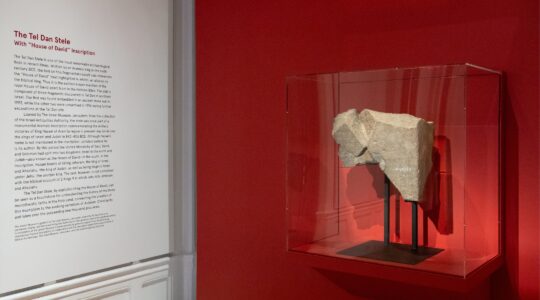Celebrating its 50th season, Israel’s Batsheva Dance Company returns to BAM next week to present “Sadeh 21,” along with a master class — already sold out — and a talk by the company’s artistic director, Ohad Naharin.
Batsheva, one of the world’s leading contemporary dance companies, was founded by the Baroness Batsheva de Rothschild, with Martha Graham as the first artistic adviser. The company is in residence in Tel Aviv, at the Suzanne Dellal Center.
“Sadeh 21,” which premiered at the Israel Festival in 2011, is a series of 21 movement studies — solos, duets and ensemble pieces, each showing a different way of moving. “Sadeh” means field.
In a telephone interview from Los Angeles, where the company performed the work last week, Naharin was reticent about describing it, but said, “It’s a lot about the connection between the skills of the dancers and me, our passion, and the power of our imagination.”
He explains that during the process of creating the work, “It was very important for me to invest in the dancers’ interpretation of my work. I didn’t separate my choreography from their interpretations.”
“When I look at my work, I don’t fall in love with my work — I fall in love with my dancers,” he adds.
That became especially clear in “Sadeh 21,” when he gave them more responsibility to collaborate in the work’s creation.
The piece doesn’t have a traditional narrative, but, as he explains, “The narrative of dance has to do with qualities, spacing, how I divide the space; music also has some narrative. If you look at a bridge, a bridge has a narrative: how long, how strong it is.” He’s most interested in challenging the senses and the imagination — “not to let points of reference disturb you from having a fresh moment of experience.”
Naharin, the artistic director of Batsheva since 1990, was born on Kibbutz Mizra. His mother was a dance teacher; his father an actor who went on to get a doctorate in psychology. He began dance training at age 22 with Batsheva. That year, 1974, Martha Graham invited him to join her company in New York, where he also studied with at the School of American Ballet and the Juilliard School. Naharin performed internationally, with Israel’s Bat-Dor Dance Company and others, and, in 1980, made his choreographic debut and formed the Ohad Naharin Dance Company with his wife, Mari Kajiwara. For the next decade his company performed in New York and abroad. In 1990, after doing some choreographic commissions for Batsheva, he was appointed artistic director. His wife died in 2001. He was awarded the Israel Prize for dance in 2005.
“Sadeh 21” is dedicated to the memory of Israeli choreographer Noa Eshkol, who developed a system of movement notation using numbers and symbols, to record body movement. (Her work was highlighted at a 2013 exhibition at The Jewish Museum.) Naharin first met Eshkol through his mother and “found her contribution and philosophy huge, to me and to the world.”
Naharin is known for gaga, an innovative dance vocabulary, that is the primary training for Batsheva’s dancers (and is followed around the world). It’s both a way of moving and a philosophy of movement.
“It’s a toolbox for the dancer to better their interpretations — to go beyond their limit on a daily basis. It’s a workout, a place where they learn,” he explains.
Support the New York Jewish Week
Our nonprofit newsroom depends on readers like you. Make a donation now to support independent Jewish journalism in New York.
“Gaga,” Naharin says, “is about listening to the body before telling it what to do. That’s what dance is.”
Naharin is very happy about returning to BAM, where he likes the audience. “And being in New York is special. This is where I started choreographing. This was my home with my late wife for 12 years.”
The Batsheva Dance Company performs “Sadeh 21” at BAM Nov. 12-15. Bam.org.
The New York Jewish Week brings you the stories behind the headlines, keeping you connected to Jewish life in New York. Help sustain the reporting you trust by donating today.




